


 |
 |
 |
In January 1968 the North Korean navy captured the U.S. spy ship, USS Pueblo and its crew. The task of determining the location of the ship and any related military activities in North Korea was dealt to the CIA's A-12 Operation Blackshield operating out of Kadena, Okinawa.
On January 26, February 19, and May 6, 1968, Missions BX6847, BX6853, and BX6858 respectively were flown over North Korea in regards to the seizure of the US ship and its crew. These flights and even the existence of the A-12 and Operation Blackshield remained a highly guarded secret until partially declassified by the CIA in April 1982, November 1989, February 1991, January 2003, and recently in early 2007.
Codenamed Mission BX 6847, CIA pilot Jack Weeks, with article number 131, took off at 01:11 Zulu on a reconnaissance mission to locate the Pueblo that the CIA expected to last 4:01 hours. Weeks conducted a normal takeoff and completed the first aerial refueling, leaving #131, with 7,500 pounds of fuel.
The mission plans were for Weeks to fly three paths across North Korea, maintaining 80,000 feet altitude. He was flying in straight and level flight at Mach 3.19 and starting a right turn heading southwest when the right inlet failed to retract all the way, causing an unstart (the engine losing thrust). He tried operating the plane's inlet manually but still had a spike actuation malfunction, causing both the climb and cruise temperatures to climb far above average. For Weeks to make his first two passes at the required altitude and speed, he had to up trim the engines to 820 degrees for a total of twenty minutes.
Weeks left the first air refueling with 67,500 pounds and his aerial refueling with 67,800 pounds. He landed at Kadena with just under 13,000 pounds.
According to the cable from General Paul Bacalis written discussing the mission: “Jack had to use some skill and cunning to make this mission good, and he did.
Developing his film showed that the photography taken by Weeks showed the USS Pueblo anchored in the Wonsan harbor. A flash message sent to John Paragosky notified him of the Pueblo anchored offshore in Changjahwan bay 2.4 nautical miles ENE of Munchon Naval Base in the frozen Wonsan harbor. It could not determine whether the ship was damaged or of any dismantling taking place.
A motor torpedo boat (P-6 PT) lay moored alongside, and a probable miscellaneous service craft (YAG) was off the port beam. The film also provided intelligence to the US 8th Army, showing no further insurgency by North Korea. Two cruise missiles sites in the Napo area were both unoccupied. The order of battle showed no significant change in the military posture of the North Korean armed forces either near the demilitarized zone or at the major military installations covered. The film observed 51 Soviet MiG FRESCO shipping crates at Pukchang-ni Airfield. Of the 14 known SAM sites in North Korea, 12 appeared to be covered, and one uncovered. All 12 sites were occupied and contained launchers in each of the six launch positions. None of the sites had one to three missiles each. Ten sites had FAN SONG radar, but at two, the film failed to make a definite identification of guidance equipment. The film showed no new SAM sites in the preliminary scan.
CINCPAC and the Defense Intelligence Agency conducted independent assessments of the photography acquired by BX Mission 6847. These assessments determined that the valuable photography and information obtained left significant deficiencies in the intelligence needed.
The current overhead photography still required imagery of seven primary jet capable airfields in North Korea. Included was the IL-28 bomber base at Uiju, vital because it was the usual operating base for a majority of these aircraft. Of 80 IL-28s currently estimated in the North Korean inventory, Weeks' 16 January mission located only 12.
Concerning Naval order battle, the mission failed to cover the naval facility at Mayang Do, which normally served the North Korean submarine fleet, or was coverage obtained of several key naval bases in north-eastern Korea. The identification of three additional KNMOR Class guided-missile patrol boats emphasized the requirement for current naval OB, Order of Battle, information.
These boats observed at Wonsan increased the US's estimate of North Korea's holdings to seven, thus requiring coverage of the important naval bases in the northeast to ensure awareness of any significant changes to North Korean naval OB in that area.
| A-12 Missions |
| Pre Mission Memo | bx6847 Mission | Post Mission Memo | March 2007 Declassification |
| BSX003 | BX6706 | BX6722 | BX6843 | BX6847 |
| USS Pueblo (AGER-2) |
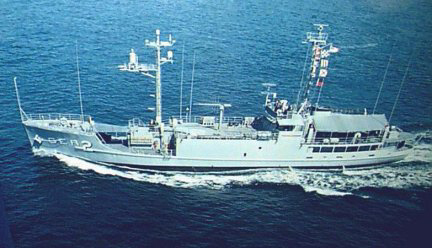 |
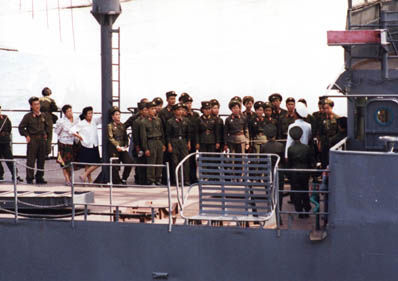 |
The USS PUEBLO was a U. S. Navy vessel sent on an intelligence mission off the coast of North Korea. On January 23, 1968, the USS PUEBLO was attacked by North Korean naval vessels and MiG jets. One man was killed and several were wounded. The Eighty-two surviving crew members were captured and held prisoner for 11 months.
![]()
A-12 (60-6932/129) was lost on June 5, 1968 during an FCF (Functional Checkout Flight) flown out of Kadena AFB Okinawa. The pilot, Jack W. Weeks became the second and last CIA pilot killed in the OXCART Program in the line of duty and is so honored in the "Book of Honor", CIA Headquarters in McLean, Virginia.
Jack, an employee of the CIA, but ostensibly a civilian pilot for Lockheed, was in the midst of what has been termed "a routine FCF" (Functional Checkout Flight) of the Top Secret Lockheed A-12 that was flying out of its TDY station at Kadena AFB, Okinawa. The particular aircraft Jack was flying was known as "932", a shortening of its official tail number of 60-6932. To its owner, the CIA, with the usual "spook-speak" it was "Article 129" (Lockheed's production number). As far as the A-12 fleet went, it was relatively middle-aged, with 409.9 hours spread over 268 flights. As for Jack, he was a very experienced pilot, already having a long military background when he joined the OXCART Project on February 14, 1963.
The A-12 had a high frequency radio telemetry system called "Birdwatcher". "Birdwatcher" monitored the most critical aircraft system functions and equipment functions. Some of the items monitored by "Birdwatcher" were; generator failure, transformer failure, hydraulic pressure systems "A and B" low, exhaust gas temperature high (EGT), compressor inlet temperature high (CIT), fuel quantity low, fuel flow low, oil pressure low, fire warning, De-rich on, altitude low, Mach number, angle of attack high, pitch and yaw acceleration, throttle position, oxygen pressure low, cockpit pressure low, destruct activated, canopy opening, seat ejection. These signals were transmitted to ground monitoring facilities so that they would know the status of the pilot and "Article".
The FCF was scheduled for a 1300 hours launch but it was pushed back to a 1400 hours launch. Jack took off from Kadena at 1400 that day. It was to be a routine FCF to check the starboard engine that had been installed in the aircraft. There was another minor problem involving pitch A and yaw M status lights that came on once, but reset perfectly. There was also some brake chatter at low-speed taxi, but nothing that could have caused the loss of the aircraft. Those problems could not be duplicated and were not entered on the AFTO 781A form used to document maintenance issues.
It was to be routine FCF towards the Philippines and then a long shallow 190-degree turn back towards Kadena. Jacks was using the call sign "Dutch 29". The aerial refueling took place about 20 minutes after takeoff, with "Article 129" taking on 34,000 pounds of fuel. When "Article 129" disconnected from the tanker it had been airborne about 29 minutes.
The only communications with the "Article" after refueling were the "A" Code at end of refueling and the "A" Code at start the southern turn of the test route. The unusual Birdwatcher codes occurred about the time the Article was at the apex of the test route turn around. The FCF was normal for the first 42 minutes and then the "Birdwatcher" system started to "chirp". The ground monitoring facility received a signal from "Birdwatcher" that the starboard engine EGT (exhaust gas temperature) was in excess of 860 degrees Celsius. Then 22 seconds later "Birdwatcher" signaled the fuel flow on the starboard engine was less than 7,500 pounds per hour with a repeat of the engine EGT in excess of 860 degrees Celsius. Eight seconds later "Birdwatcher" signaled that the aircraft was below 68,500 feet, with a repeat of the two previous warnings. Those were the final transmissions from Jack and the "Article".
Several attempts were made to contact Jack and "Birdwatcher" without success. Operation of the monitoring facilities continued until the time that the aircraft's fuel would have been depleted. There was no further contact with Jack or "Article 129". The aircraft was declared missing 520 miles East of the Philippines and 625 miles south of Okinawa in the South China Sea. The loss was due to an in flight emergency. To maintain security the official news release identified the loss as an SR-71.
An intense air and sea search lasting weeks was conducted but no wreckage of "Article 129" was ever recovered. It was presumed totally destroyed at sea. The "Birdwatcher" system provided the only clues to what happened on this fight so the accident report was based on limited information. From "Birdwatchers" limited information, it was ascertained that some kind of malfunction involving an engine over temperature and low fuel flow on the starboard engine had contributed to a catastrophic failure and subsequent aircraft break-up. The loss of such a highly skilled and professional pilot in the OXCART program was a sad moment and misfortune.
Jack and his fellow A-12 pilots, operating within the voids of secrecy, were our nation's Cold War icons of aviation. They were the 'Best of the Best'. They flew across the sky at unbelievable speeds and higher than most can even imagine. They did this to protect us during the "Cold War". Every time they climbed into the cockpit it might have been their final flight. These men that accepted this risk were rewarded with experiences that very few can even imagine. To these "Cold War Warriors" the "Unknown Heroes" we owe more than one can say with "thanks". For those brave and talented men that paid the highest price for their courageous service we are forever in their debt. To the families of these men who gave their all, we are also forever grateful.
![]()
Jack Warren Weeks was born to Nathan M. Weeks and Abbie K. Weeks in Birmingham,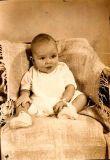 Alabama on February 23, 1933. He was their second born son but their first living child. Jack's name was his father's nickname. His mother dressed him in solid white until he was four years old and he wore his hair in long brown curls.
Alabama on February 23, 1933. He was their second born son but their first living child. Jack's name was his father's nickname. His mother dressed him in solid white until he was four years old and he wore his hair in long brown curls.
As a child, 1933-1948 , Jack spent time in Winfield, Alabama with male cousins and paternal grandmother, aunts and uncles. When not in Winfield he could be found in Carrollton, Alabama with a maternal aunt and uncle with another male cousin. No more white clothes or long brown curls for him.
During these years he developed a love for fishing, hunting and watching stock-car racing. His uncles provided the instruction and a love for outdoor life. High School was a time of increasing his love for fishing, hunting and stock-car races. But that was not all his life consisted of. He was popular with the girls and listed as "The Most Desirable Date". His high school yearbook Senior Data includes:
| Nickname: Ickie, Lightning, Jasper Ambition: To be a bang of a success on my first H-Bomb experiment Activities: Track, Football Manager, School Newspaper Representative, Council Member, Glee Club, Student Teacher Baseball Manager, Numerous Session Room Offices, Campaign Manager, Senior Staff, Various ROTC Activities, First Lieutenant, ROTC Quotation: "All I am and all I ever hope to be, I owe to my mother." Honors were National Honor Society and Hi-Y Club. |
Jack was called Jackie until he graduated from High School. Thereafter, he was called Jack. He attended church with his parents during his growing up years. It was at 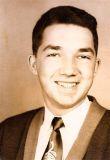 church during his junior year in High School that he met and began dating the girl who would later become his wife.
church during his junior year in High School that he met and began dating the girl who would later become his wife.
During his high school years he loved to tinker. He was forever taking apart his motor scooter and repairing appliances for his mom. Besides tinkering he had a life-long love for building airplanes. His other love was animals. His dog, Lucky, was a constant companion.
 Jack's frugal parents taught him early the value of hard work and saving his money. From an early age he threw newspapers daily and worked summer jobs. His money went to buy US Savings Bonds.
Jack's frugal parents taught him early the value of hard work and saving his money. From an early age he threw newspapers daily and worked summer jobs. His money went to buy US Savings Bonds.
Jack's college years, January 1951 to May 1955, were equally busy. He attended the University of Alabama at Tuscaloosa, Alabama. He majored in Physics and was active in ROTC. As a member of the Delta Chi Fraternity he lived in the Frat House on campus. His pet during these days was a flying squirrel that lived in his pocket. He continued to commute home in Birmingham for his haircuts and to date his high school sweetheart. A short break from school found him driving trucks hauling Uranium down dirt mountain roads in Colorado with a fraternity brother.
After returning to school his thoughts turned to marriage. In 1953 he married his high school sweetheart, Sharlene Fenn at the West End Baptist Church in Birmingham, Alabama. In the fall of 1953 they moved into a small off campus apartment.
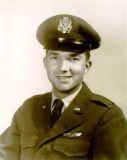 On June 1, 1954 Jack became a father to a tiny baby boy, Steven. The family moved into old World War II army barracks on campus. Jack worked as a janitor on campus, taking Steve with him in his stroller. Free time would find him fishing for brim in the campus pond with Steve beside him.
On June 1, 1954 Jack became a father to a tiny baby boy, Steven. The family moved into old World War II army barracks on campus. Jack worked as a janitor on campus, taking Steve with him in his stroller. Free time would find him fishing for brim in the campus pond with Steve beside him.
May, 1955 was graduation time for Jack. He received his BS from the University of Alabama where he was a member of Sigma Pi Sigma, a Physics Honor Society. At another ceremony on campus, Jack was commissioned as a Second Lieutenant in the United States Air Force Reserve. He was a member of the Arnold Air Society and the Air Force Association while at the University.
 |
| Jack Weeks learning to fly |
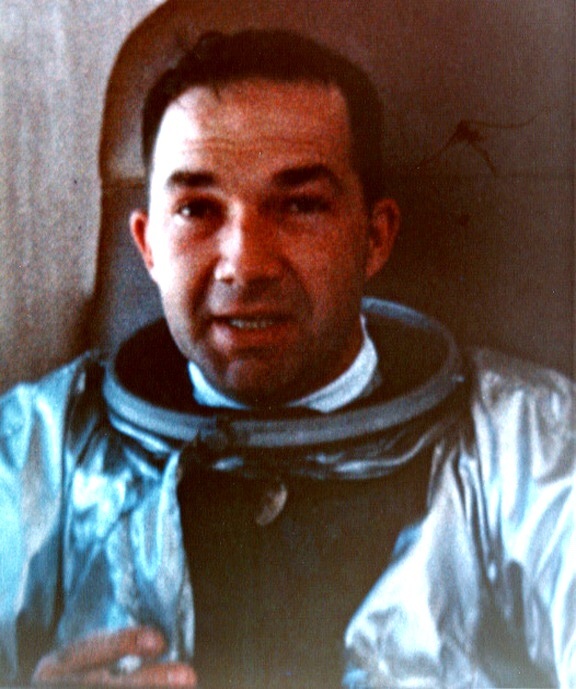 |
| 2D Lt. Jack Weeks at Bitburg AFB, Germany 1957 |
Milestones during this era of Jack's military career were:
|
"The New Head" - A movie about a new arrival in the Squadron.His 36th Fighter Wing Awarded the Air Force Outstanding Unit Award
His being sworn into the Regular Air Force as First Lieutenant Jack W. Weeks on 3 August 1958 while assigned to the 22nd Tactical Fighter Squadron Birth of third child, a son, Kyle Death of Kyle - September 1958 Birth of fourth child, a son, Daniel Timothy - November 1959 |
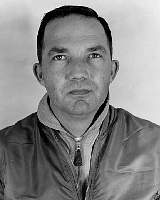 |
| Jack Weeks at Nellis AFB 1962 or 1963 |
While assigned to Nellis AFB, Captain Weeks was awarded Air Force Commendation Medal for meritorious service as an Instructor Pilot ![]() and his outstanding service and devotion to duty from 18 May 1960 to 5 January 1962. He served as personal Instructor Pilot and Aide to General John N. Ewbank, Jr., and as Aide to General Boyd Hubbard, Jr.
and his outstanding service and devotion to duty from 18 May 1960 to 5 January 1962. He served as personal Instructor Pilot and Aide to General John N. Ewbank, Jr., and as Aide to General Boyd Hubbard, Jr.
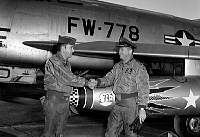 |
| Award to Jack for 1,000 hours in the F-100 |
Jack was active in community and church activities. Lots of fishing in Lake Mead resulting in deep-fat fried bass for family and friends.
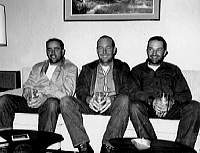 |
| Mel, Jack & Jack Returning from a hunting trip |
From February 14, 1963 to June 4, 1968, home for Jack and family was Canoga Park, California while he worked for the Central Intelligence Agency as an Experimental Test Pilot for the A-12. Jack and his wife adopted Susan, their fourth child, a nearly four year old Korean - American girl from Korea.
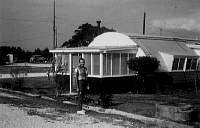 |
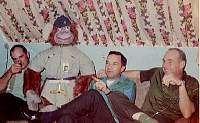 |
| Jack Weeks in Kadena during Operation Black Shield | |
Cooking meals from recipes from other countries and the cook for the Roadrunners, Jack told a story about making fudge in a spoon over a stove burner as a kid. He loved chocolate -- and cars. Parts from the automobile often rested on the kitchen table for cleaning and repair. One habit his wife disliked.
CIA work meant four days work and three days off. Overseas trips meant five weeks home and seven in Okinawa. The weeks at home were the usual 4/3 schedule. Jack's caring concern and commitment for his fellow pilots is reflected in the fact that he went to Okinawa to fly missions over North Vietnam. His best friend was a MIA and another former instructor pilot had been shot down and killed over North Vietnam. He felt it was his duty to support the men there.
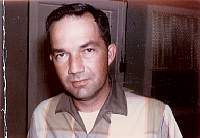 |
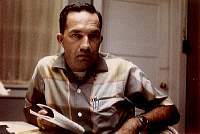 |
| Jack Weeks in 1968 | |
Jack is known as the designer of the patch, Cygnus. The handmade design was among his belonging. He had enough patches made for each pilot in the program. 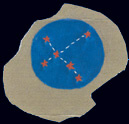
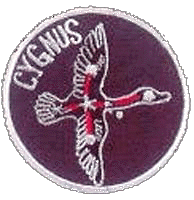 He also designed and made key rings for each pilot as a memento. On May 10, 1968 , Robert J. Gilliland nominated Jack for The Society of Experimental Test Pilots. He received that honor in July 1968 after his death.
He also designed and made key rings for each pilot as a memento. On May 10, 1968 , Robert J. Gilliland nominated Jack for The Society of Experimental Test Pilots. He received that honor in July 1968 after his death.
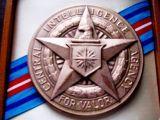
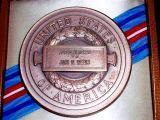 On May 17, 1968, Jack was awarded the CIA Intelligence Star for courageous action. The award was presented to his wife, Sharlene, posthumously, in June 1968.
On May 17, 1968, Jack was awarded the CIA Intelligence Star for courageous action. The award was presented to his wife, Sharlene, posthumously, in June 1968.
On June 1, 1968, Jack telephoned his family from Okinawa to wish his son, Steve and his daughter, Susan a 'Happy Birthday'. That was the last communication they received from him. His letters continued to arrived after his death, a salute to his love and concern for his family. Through the years of courtship and marriage Jack and Sharlene had corresponded more than most couples do in a lifetime. Those letters are saved for their family to read in the future.
Jack's children are now adults with families of their own. He would be proud of each of them. Three live in California and one in Massachusetts. His legacy is nine grandchildren and one great-grandchild. The girls out number the boys, eight to two.
Jack's other legacies include his love for animals, aquariums of fish, tinkering, building airplanes, and grand children who excel in Math. One granddaughter named after him, Jacklyn called Jackie. One grandson who bears his middle name, Warren.
When Jack agreed to fly for the CIA, he planned to re-enter the Air Force and achieve his one goal of attending MIT to study Optics.
But more than any one thing he wanted to be able to spend more time with his family.
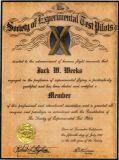 Jack's name is recorded in the "The Book of Honor" in the lobby of the CIA Headquarters in Virginia. On the huge marble wall behind the book are stars carved there. Each star represents an agent who has died in the line of duty. One of those stars is Jack's.
Jack's name is recorded in the "The Book of Honor" in the lobby of the CIA Headquarters in Virginia. On the huge marble wall behind the book are stars carved there. Each star represents an agent who has died in the line of duty. One of those stars is Jack's.
Jack's name appears on the back cover of a book written by Ted Gup entitled, The Book of Honor, Covert Lives and Classified Deaths at the CIA, 2000. The book is dedicated to the sons and daughters of the CIA's stars.
Jack always carried a Bible with him when he traveled. He was a man of integrity who had the following creed hanging on the family room wall of his home.
![]()
It is my right to be uncommon if I can. I seek opportunity... Not security. I do not wish to be a kept citizen, humbled and dulled by having the state look after me. I want to take the calculated risk, to dream and to build, to fail and to succeed. I refuse to barter incentive for a dole, I prefer the challenges of life to the guaranteed existence: the thrill of fulfillment to the sale calm of utopia. I will not trade freedom for beneficence nor my dignity for a handout. I will never cower before any master nor bend to any threat. It is my heritage to stand erect, proud and unafraid; to think and act for myself; enjoy the benefits of my creations and to face the world boldly and say, this I have done. All this is what it means to be an American.
In remembrance of Jack:
![]() HIGH FLIGHT
HIGH FLIGHT
By John Gillespie Magee, Jr. ![]()
| Oh, I have slipped the surly bonds of earth And danced the skies on laughter-silvered wings; Sunward I've climbed, and joined the tumbling mirth Of sun-split clouds-and done a hundred things You have not dreamed of-wheeled and soared and swung High in the sunlit silence, Hov'ring there, I've chased the shouting wind along, and flung My eager craft through footless halls of air. Up, up the long, delirious, burning blue I've topped the windswept heights with easy grace Where never lark, or even eagle flew. And while with silent lifting mind I've trod The high untrespassed sanctity of space, Put out my hand, and touched the face of God. |
Click on images to enlarge

The Book of Honor" located in front of the Memorial Wall at CIA Headquarters

2008 - Alabama honors Jack Weeks on 40th anniversary of his death
|
CIA 60TH ANNIVERSARY - 19 September 2007
Sharlene Weeks, widow of Jack Weeks honoree at A-12 Article 128 Dedication
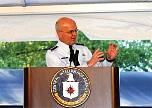 |
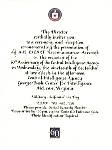 |
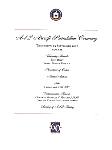 |
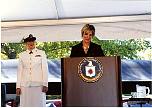 |
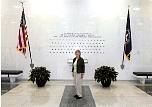 |
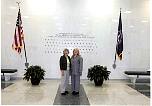 |
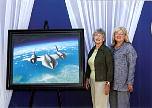 |
 |
 |
 |
 |